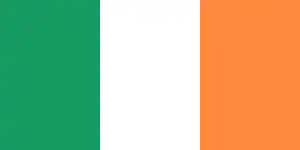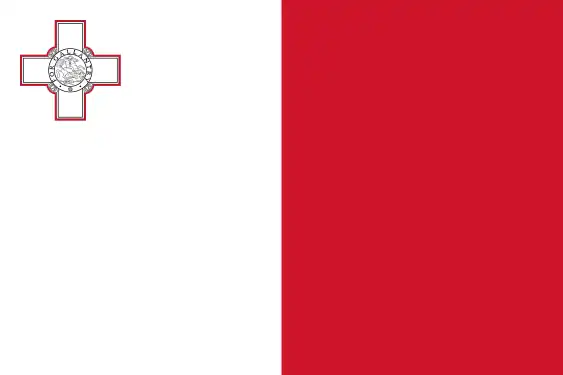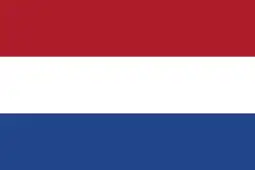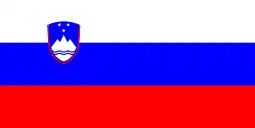
The Wassenaar Arrangement on Export Controls for Conventional Arms and Dual-Use Goods and Technologies is a multilateral export control regime established on 12 July 1996, in Wassenaar, near The Hague, Netherlands. The Wassenaar Arrangement was established to contribute to regional and international security and stability by promoting transparency and greater responsibility in transfers of conventional arms and dual-use goods and technologies, thus preventing destabilizing accumulations. Participating states seek, through their national policies, to ensure that transfers of these items do not contribute to the development or enhancement of military capabilities which undermine these goals, and are not diverted to support such capabilities.
It is the successor to the Cold War–era Coordinating Committee for Multilateral Export Controls (CoCom). The Wassenaar Arrangement is considerably less strict than CoCom, focusing primarily on the transparency of national export control regimes and not granting veto power to individual members over organizational decisions. A Secretariat for administering the agreement is located in Vienna, Austria. Like CoCom, however, it is not a treaty, and therefore is not legally binding.
Every six months member countries exchange information on deliveries of conventional arms to non-Wassenaar members that fall under eight broad weapons categories: battle tanks, armoured fighting vehicles, large-calibre artillery, military aircraft, military helicopters, warships, missiles or missile systems, and small arms and light weapons.
There are 42 participating states including many former Comecon (Warsaw Pact) countries.
Control lists
The outline of the arrangement is set out in a document entitled "Guidelines & Procedures, including the Initial Elements".[1] The list of restricted technologies is broken into two parts, the "List of Dual-Use Goods and Technologies" (also known as the Basic List) and the "Munitions List". The Basic List is composed of ten categories based on increasing levels of sophistication:
- Category 1 – Special Materials and Related Equipment
- Category 2 – Materials Processing
- Category 3 – Electronics
- Category 4 – Computers
- Category 5 – Part 1 – Telecommunications
- Category 5 – Part 2 – Information Security
- Category 6 – Sensors and Lasers
- Category 7 – Navigation and Avionics
- Category 8 – Marine
- Category 9 – Aerospace and Propulsion
Basic List has two nested subsections—Sensitive and Very Sensitive. Items of the Very Sensitive List include materials for stealth technology—i.e., equipment that could be used for submarine detection, advanced radar, and jet engine technologies.
Within each of the categories, there are 5 types of controlled item. These are approximately as follows:
- A – Physical goods and components
- B – Plant, test equipment etc. for the production of the goods
- C – Materials typically from which the goods can be created
- D – Software used typically for the development, production or use of the goods
- E – Technology used typically for the development, production or use of the goods
The types of item B, C, D and E typically refer to the type A items, but there are many exceptions, e.g. some materials may be controlled, even though there is no specific good referred to.
The Wassenaar Arrangement List's categories are typically processed, and merged with other sources, e.g. Category 5.A.2 maps on to US ECCN 5A002, and EU control classification 5A002.
The Munitions List has 22 categories, which are not labeled.
In order for an item to be placed on the lists, member states must take into account the following criteria:
- Foreign availability outside participating states
- Ability to effectively control the export of the goods
- Ability to make a clear and objective specification of the item
- Controlled by another regime, such as the Australia Group, the Nuclear Suppliers Group, or the Missile Technology Control Regime
Admission requirements
Admission requires states to:
- Be a producer or exporter of arms or sensitive industrial equipment
- Maintain non-proliferation policies and appropriate national policies, including adherence to:
- Non-proliferation policies, such as (where applicable) the Nuclear Suppliers Group, the Missile Technology Control Regime, and the Australia Group
- Treaty on the Non-Proliferation of Nuclear Weapons, the Biological Weapons Convention, the Chemical Weapons Convention and, where applicable, START I (including the Lisbon Protocol)
- Maintain fully effective export controls
The Arrangement is open on a global and non-discriminatory basis to prospective adherents that comply with the agreed criteria. Admission of new members requires the consensus of all members.
India joined as the 42nd participating state on 7 December 2017. "Wassenaar Arrangement participating states reviewed the progress of a number of current membership applications and agreed at the plenary meeting to admit India which will become the Arrangement's 42nd participating state as soon as the necessary procedural arrangements for joining the WA are completed", the grouping said in a statement.[2][3] India's application was supported by Russia, the United States, France and Germany.[4]
2013 amendments
In December 2013, the list of export restricted technologies was amended to include Internet-based surveillance systems. New technologies placed under the export control regime include "intrusion software"—software designed to defeat a computer or network's protective measures so as to extract data or information—as well as IP network surveillance systems.
The purpose of the amendments was to prevent Western technology companies from selling surveillance technology to governments known to abuse human rights. However, some technology companies have expressed concerns that the scope of the controls may be too broad, limiting security researchers' ability to identify and correct security vulnerabilities. Google and Facebook criticised the agreement for the restrictions it will place on activities like penetration testing, sharing information about threats, and bug bounty programs.[5][6] They argue that the restrictions will weaken the security of participating nations and do little to curb threats from non-participant nations.[7][8]
Membership
The 42 states that have been participating since December 2017 are:[9]
 Argentina
Argentina.svg.png.webp) Australia
Australia Austria
Austria 
.svg.png.webp) Belgium
Belgium 

 Bulgaria
Bulgaria 

.svg.png.webp) Canada
Canada 
 Croatia
Croatia 

 Czech Republic
Czech Republic 

 Denmark
Denmark 

 Estonia
Estonia 

 Finland
Finland 

 France
France 

 Germany
Germany 

 Greece
Greece 

 Hungary
Hungary 

 India
India Ireland
Ireland 
 Italy
Italy 

 Japan
Japan Latvia
Latvia 

 Lithuania
Lithuania 

 Luxembourg
Luxembourg 

 Malta
Malta 
 Mexico
Mexico Netherlands
Netherlands 

 New Zealand
New Zealand Norway
Norway 
 Poland
Poland 

 Portugal
Portugal 

 Romania
Romania 

 Russia
Russia Slovakia
Slovakia 

 Slovenia
Slovenia 

 South Africa
South Africa South Korea
South Korea Spain
Spain 

 Sweden
Sweden 
.svg.png.webp) Switzerland
Switzerland Turkey
Turkey 
 Ukraine
Ukraine United Kingdom
United Kingdom 
 United States
United States 
![]() – European Union member state.
– European Union member state. ![]() – NATO member.
– NATO member.
See also
- Arms Export Control Act – United States law
- Defense Security Cooperation Agency – US military agency
- International Traffic in Arms Regulations – United States law preventing export of military technologies
References
- ↑ "Guidelines & Procedures, including the Initial Elements" (PDF). Public Documents. Vol. 1: Founding Documents. Wassenaar Arrangement. December 2016. Retrieved 6 April 2023.
- ↑ Falconi, Jean-Louis (7 December 2017). "Statement Issued by the Plenary Chair on 2017 Outcomes of the Wassenaar Arrangement on Export Controls for Conventional Arms and Dual-Use Goods and Technologies" (PDF). Wassenaar Arrangement. Archived (PDF) from the original on 6 March 2019. Retrieved 7 December 2017.
- ↑ "Wassenaar Arrangement decides to make India its member". The Hindu. Press Trust of India. 8 December 2017. Retrieved 6 April 2023.
- ↑ "India becomes member of key export control regime". Business Standard. Indo-Asian News Service. 8 December 2017. Retrieved 6 April 2023.
- ↑ Brandom, Russell (20 July 2015). "Google says controversial export proposal would make the world 'less secure'". The Verge. Retrieved 30 July 2015.
- ↑ "Wassenaar rules are not the right direction". Facebook Public Affairs. 28 July 2015. Retrieved 30 July 2015 – via Facebook.
- ↑ Bennett, Cory (21 July 2015). "Cyber industry assails anti-hacking regulations". The Hill. Retrieved 30 July 2015.
- ↑ Brandom, Russell (22 May 2015). "The international rules that have the security world on alert". The Verge. Retrieved 30 July 2015.
- ↑ "Participating States". Wassenaar Arrangement. Archived from the original on 27 May 2012. Retrieved 6 April 2023.
External links
| Library resources about Wassenaar Arrangement |